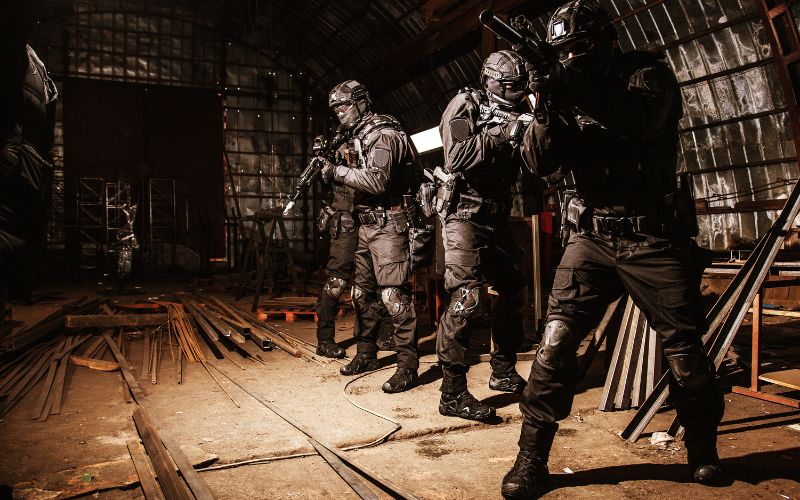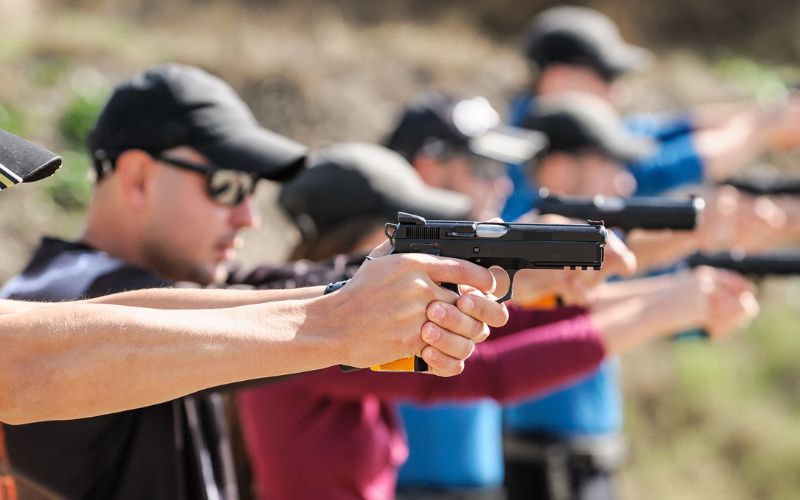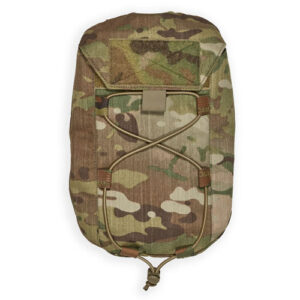How To Train Like A Tactical Operator: Tips And Techniques

Tactical operators—whether military personnel, law enforcement officers, or special forces—require a fitness level beyond conventional workouts. Their training must prepare them for extreme physical and mental demands, including combat situations, heavy lifting, endurance challenges, and high-pressure decision-making. Unlike regular fitness enthusiasts, tactical athletes need to develop a well-rounded combination of strength, endurance, mobility, and mental toughness to thrive in their field.
This blog explores how to train like a tactical operator, offering tips and techniques for strength, endurance, agility, and mental conditioning. Whether you aspire to a career in tactical fields or want to build an elite fitness level, these insights can help you achieve your goals.
Why Is It Important To Train Like A Tactical Operator?
Before diving into specific techniques, it’s important to understand why tactical training is so effective and unique. Tactical athletes don’t train to look fit—they train to be functional to learn survival skills. Every movement is designed to mimic real-world situations, enhancing their ability to perform under stress. Their fitness training focuses on the following:
- Functional Strength: The ability to easily lift, carry, and move in unpredictable environments.
- Endurance: Stamina to sustain physical exertion over prolonged periods.
- Agility and Mobility: Quick movements and transitions that help avoid injury and enhance performance.
- Mental Toughness: Staying composed and performing well under stress or fatigue.
Key Components Of Tactical Training

Training as a tactical operator requires balancing several components. The best approach is to focus on strength, cardiovascular fitness, mobility, and mental resilience. Let’s break down each area in detail.
1. Strength Training
Tactical operators must develop functional strength to handle physical challenges like lifting heavy objects, pulling, climbing, and carrying tactical gear over long distances. Here’s how you can build functional strength effectively:
Compound Movements
Tactical athletes focus on compound movements that target multiple muscle groups simultaneously, mimicking the types of lifts and carry they’ll encounter in the field. Prioritize exercises like:
- Deadlifts simulate the movement of lifting heavy equipment or even carrying a person, or you can even carry military equipment.
- Squats: Strong legs are critical for tactical operators who often move quickly under load.
- Pull-ups: Excellent for developing upper body strength, a necessity for climbing and pulling movements.
- Push-ups: A full-body movement that also builds core stability and upper-body endurance.
Load Bearing
Tactical operators often train with added weight. Incorporating rucking—walking or running with a weighted backpack—is a great way to build strength while improving cardiovascular fitness. Start with a light load and gradually increase the weight as you progress.
Unilateral Exercises
Tactical operators frequently use one side of their body to perform movements, such as holding a weapon or pulling a teammate to safety. To mimic this, incorporate unilateral exercises like single-arm presses, lunges, and single-leg deadlifts to improve balance and strength.
2. Endurance Training
While strength is critical, endurance plays a major role in tactical fitness. The ability to perform physically demanding tasks over extended periods without fatigue is essential. Here’s how you can improve your endurance:
High-Intensity Interval Training (HIIT)
Tactical situations often involve bursts of intense activity followed by periods of lower intensity. HIIT workouts are perfect for simulating these conditions. In HIIT, you alternate between short bursts of intense effort and recovery periods. Some examples include:
- Sprint intervals (30 seconds of all-out effort, followed by 1-minute rest)
- Circuit training with exercises like burpees, kettlebell swings, and sprints
These exercises help you build cardiovascular stamina while also promoting muscle endurance.
Steady-State Cardio
While HIIT is excellent for anaerobic endurance, steady-state cardio is also necessary to develop aerobic capacity, particularly at varying threat levels that demand prolonged readiness. Long-distance running, swimming, or cycling can help build the stamina required for extended physical exertion during these differing threat levels. Aim for at least one long weekly cardio session, focusing on maintaining a steady pace for 30-60 minutes.
3. Agility And Mobility Training

Tactical operators must be able to move efficiently and quickly. Agility allows them to change direction rapidly, while mobility ensures their bodies can move through a full range of motion without restrictions. Here’s how you can improve your agility and mobility:
Plyometrics
Plyometric exercises—such as box jumps, bounding, and lateral jumps—train your body to generate force quickly. These movements simulate quick direction changes and explosive movements often required in tactical situations.
Ladder Drills
Agility ladder drills are an excellent way to improve footwork, coordination, and speed.
Performing drills like high knees, lateral runs, and in-and-out foot movements will develop both coordination and agility.
Flexibility and Mobility
Tactical operators focus on mobility exercises and stretching to prevent injury and maintain optimal movement patterns while carrying heavy tactical tools. Incorporate the following mobility practices into your routine:
- Dynamic stretching before workouts (e.g., leg swings, arm circles)
- Foam rolling to reduce muscle tightness and improve blood flow
- Yoga or mobility flow routines to enhance overall flexibility and body awareness
4. Mental Toughness And Resilience
Tactical operators face extreme stress, fatigue, and pressure, which require immense mental toughness. Developing mental resilience will help you push through discomfort and stay focused when your body is exhausted. Here are some techniques to build mental toughness:
Cold Exposure
Training under harsh environmental conditions, such as cold exposure, forces your body and mind to adapt to discomfort. Practices like cold showers or ice baths can increase stress tolerance and improve focus.
Visualization Techniques
Many tactical operators use visualization to mentally rehearse their performance under high-pressure situations. Before a workout or challenging event, take a few minutes to visualize yourself completing the task successfully, imagining how you will overcome obstacles.
Breathing Exercises
Controlled breathing can help reduce stress, maintain focus, and improve performance under pressure. Techniques like box breathing (inhale for 4 seconds, hold for 4, exhale for 4, hold for 4) can be highly effective in calming the nervous system and increasing mental clarity during physically demanding situations.
Building A Tactical Operator Training Plan

Now that you understand the key components of tactical training, it’s time to put them together into a comprehensive plan. A well-rounded tactical training program should include:
- Strength Training: 3-4 weekly days, focusing on compound movements and functional strength exercises.
- Endurance Training: 2-3 days per week, incorporating HIIT and steady-state cardio sessions.
- Agility and Mobility Work: 2 days per week, using plyometrics, agility ladder drills, and mobility exercises.
- Recovery and Flexibility: 1-2 days per week, focusing on active recovery, foam rolling, and yoga or stretching.
- Mental Toughness Drills: Include cold exposure, visualization, or breathing exercises 2-3 times per week.
Example Tactical Operator Weekly Training Plan
Monday: Strength Training (Upper Body)
- Pull-ups: 3 sets of 8-10 reps
- Deadlifts: 4 sets of 5 reps
- Push-ups: 4 sets of 12-15 reps
- Single-arm dumbbell press: 3 sets of 8 reps per side
Tuesday: HIIT + Agility Drills
- Sprint intervals: 10 x 30 seconds sprint, 1-minute rest
- Agility ladder drills: 3 rounds
- Box jumps: 3 sets of 10
Wednesday: Strength Training (Lower Body)
- Squats: 4 sets of 5 reps
- Lunges: 3 sets of 10 reps per leg
- Step-ups with weight: 3 sets of 12 reps
- Kettlebell swings: 3 sets of 15 reps
Thursday: Steady-State Cardio
- 45-minute moderate-paced run or swim
Friday: Strength Training (Full Body)
- Farmer’s carries: 3 sets of 30 meters
- Push press: 3 sets of 8 reps
- Plank: 3 sets, hold for 1 minute
- Turkish get-ups: 3 sets of 5 per side
Saturday: Mobility and Flexibility
- Yoga flow or dynamic stretching routine for 30 minutes
- Foam rolling
Sunday: Active Recovery
- Light stretching, walking, or swimming for 30-45 minutes
Conclusion
Training as a tactical operator requires a balance of functional strength, cardiovascular endurance, agility, mobility, and mental toughness. Whether preparing for a tactical career or just wanting to challenge your fitness, these tips and techniques will help you develop the physical and psychological resilience required for success. Implement the tactical operator training plan into your routine, and you’ll build a body ready for anything life throws your way.

